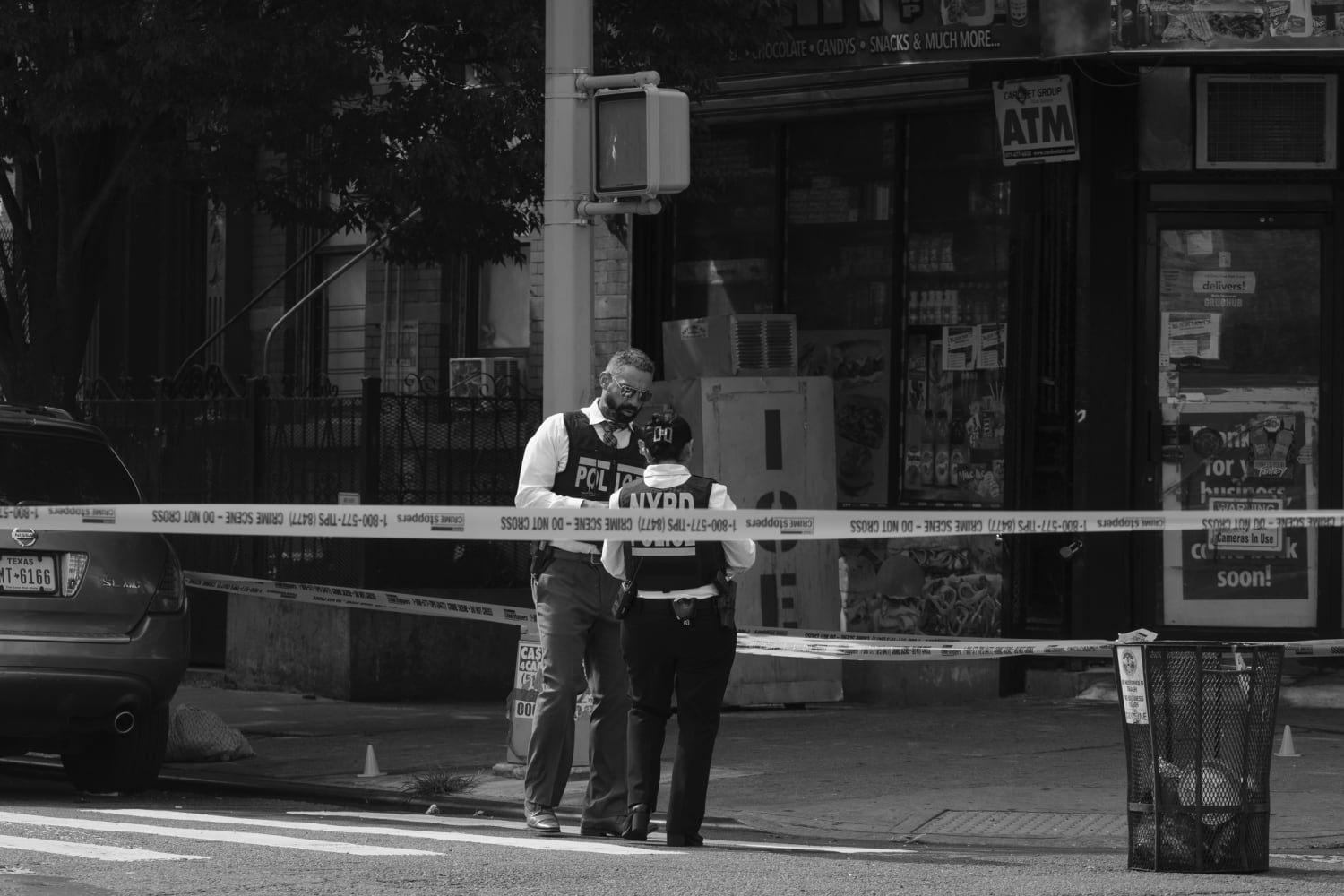
Violent crime in the first half of the year is down in 37 cities across the U.S. but remains above pre-pandemic levels, according to a report released Thursday by the nonpartisan Council on Criminal Justice.
The report comes after elected leaders in some cities, like San Francisco and Chicago, were ousted over perceived crime spikes, with critics saying those cities had become dangerous and unlivable.
While violent crime remains above 2019 levels, the report paints a different picture for urban centers, which are experiencing declines in most crimes since the pandemic upended life for millions of people.
Using data collected from monthly police department reports from January 2018 to June, researchers assessed changes in 10 types of crime, including homicide, aggravated assault, gun assault, domestic violence, robbery, burglary, larceny, motor vehicle theft and drug offenses.
But using data the FBI did receive, homicides fell in 30 cities by 9.4% in the first six months of this year compared to the same period last year, according to the council, which studies criminal justice policy. They remain 24 percent higher than in the first half of 2019 and 15% higher than in 2014, the lowest period recorded since World War II.
Gun assaults, aggravated assaults and robberies also remained higher in the first half of 2023 compared to the first half of 2019, with gun assaults up 39%, aggravated assaults up 8% and robberies up 2%.
But when compared to the first half of last year, gun assaults decreased more than 5%, while robberies decreased by 3.6% and aggravated assaults 2.5%.
“The decline we see across the major crime categories is encouraging, but our country should not be comfortable with rates of violence that continue to claim thousands of lives each year,” said Richard Rosenfeld, a professor of criminology and criminal justice at the University of Missouri-St. Louis and lead author of the report.
Domestic violence rates were relatively unchanged, decreasing 0.3% from this time in 2022. Drug offenses increased by just 1%.
The findings may do little to change the messaging by conservative-leaning politicians, personalities and media outlets that insist crime is on the upswing in big cities, despite statistics to the contrary, further inflaming the rural-urban divide.
In the report, researchers found discrepancies between cities that recorded decreases in homicides, such as Raleigh, North Carolina, which experienced a 59% drop, and those that had upticks, like Seattle, which recorded a 133% increase.
One area in which there was an increase was motor vehicle thefts, which rose by more than 35% in 32 cities that reported data. Seven of those cities had upticks of more than 100%, including Rochester, New York, at 355%, and Cincinnati at 162%.
“The downward trends in violent crime we’re seeing as the pandemic recedes should not dim the intensity of our commitment to reduce violence across the country,” said Ernesto Lopez, a council researcher and co-author of the study. “Although the levels of homicide and other violent crime are well below historical peaks, they remain intolerably high, especially in poorer communities of color.”
Researchers looked at cities of varying size and demographics, including Atlanta; Detroit; Phoenix; Chicago; Denver; Memphis, Tennessee; San Francisco; Los Angeles; Washington, D.C.; and Philadelphia.
The smallest city was Chattanooga, Tennessee, with less than 180,000 residents, and the largest was New York, with more than 8.4 million residents.
The 37 cities used in the sample are representative of the entire country, the Council on Criminal Justice said.
The council began tracking data from local police departments during the pandemic, around the same time the FBI updated its violent crime reporting system in 2021. The new federal method was rolled out during the pandemic, and many of the country’s largest cities, including Los Angeles and New York, were unable to immediately adopt the system.
Because of a change in the FBI reporting system, nearly 40% of law enforcement agencies did not report data to the federal government in 2021, the Marshall Project reported.
While the Council on Criminal Justice’s findings paint an encouraging picture for the country, the director of the Research and Evaluation Center at John Jay College in New York cautioned against reading too much into them.
“You can learn something by looking at city-specific trends, but don’t rush to broad conclusions based on an incomplete sample,” Jeffrey Butts said.
Evaluating national crime numbers has always been a challenge for researchers because jurisdictions do not report and collect data uniformly. Some communities, especially those of color, are also weary of police departments and sometimes hesitate to report crime.
Complicating matters, without at least a decade’s worth of complete data from every city and state, it is nearly impossible to paint a complete picture, Butts said, adding that small samples can be easily manipulated to fit just about any narrative or political agenda.
“We all react to crime partly intellectually, partly emotionally and partly politically,” he said. “Everyone uses the crime issue for their owns needs.”
Source: | This article originally belongs to Nbcnews.com










